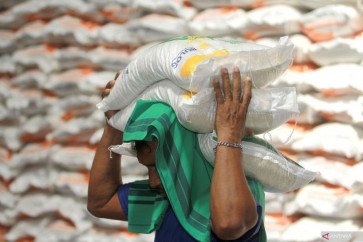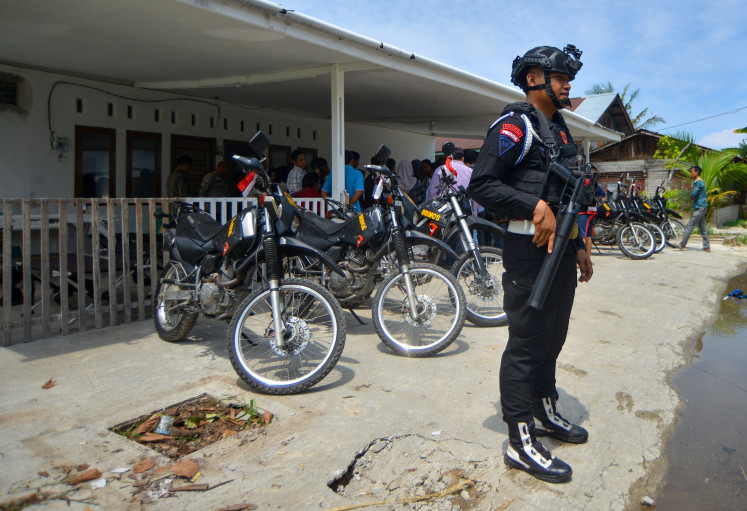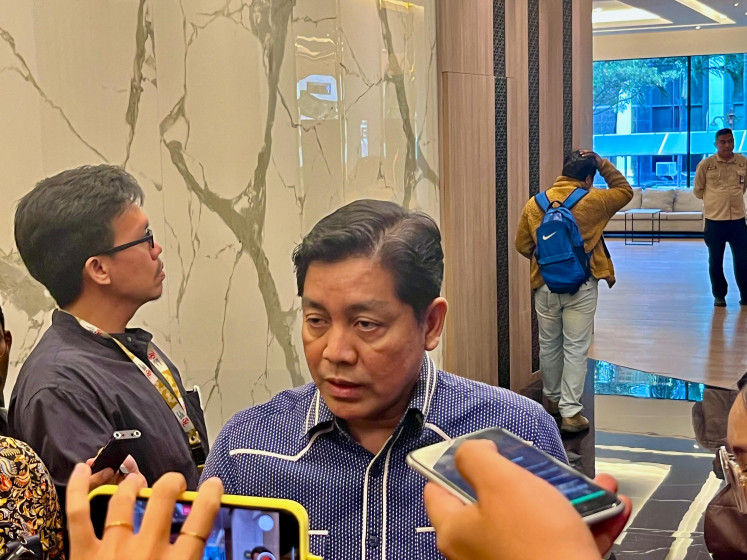Popular Reads
Top Results
Can't find what you're looking for?
View all search resultsPopular Reads
Top Results
Can't find what you're looking for?
View all search resultsCost recovery may balloon in 2018
The government anticipates a significant increase in the budget to reimburse upstream oil and gas activities next year despite a declining rate of production
Change text size
Gift Premium Articles
to Anyone
T
he government anticipates a significant increase in the budget to reimburse upstream oil and gas activities next year despite a declining rate of production.
The Upstream Oil and Gas Regulatory Special Task Force (SKKMigas) has affirmed that the budget will compensate exploration and exploitation activities, colloquially known as cost recovery. The compensation will jump by more than 26 percent to US$13.28 billion next year from $10.7 billion this year as set out in the revised state budget approved by the House of Representatives budget committee.
SKKMigas finance and monetization deputy Parulian Sihotang confirmed that Energy and Mineral Resources Minister Ignasius Jonan had approved the estimation in February.
The ministry has set the cost recovery budget to range from $11.39 billion to $13.28 billion next year.
“The $11.39 billion figure will be achieved if efficiency and optimization measures are fully implemented, whereas the $13.28 billion figure is in case business goes on as usual,” Parulian told The Jakarta Post on Monday.
Realized cost recovery expenses have actually followed a downward trend for the past couple of years.
While in 2014 the expenditure reached $16.3 billion, it declined to only $11.6 billion in 2016.
However, the government tends to underestimate the amount of funds needed to reimburse oil and gas investors, causing the realized budget to balloon.
Cost recovery for this year is also expected to surpass the set budget. SKKMigas revealed earlier this month that the cost recovery stood at $5.87 billion in July, or around 55 percent of the total budget.
The figure shot up from $4.87 billion in June because of additional investment credit and depreciation of the Cepu block.
As the cost recovery budget cannot be fixed until the government obtains approval from the House, SKKMigas has based its estimates on several factors, including the potential increase in depreciation costs for upstream projects that have just started to open up this year and will commence next year.
These include the project in the Jangkrik gas field in the Muara Bakau block in the Makassar Straits off East Kalimantan.
Moreover, the government also needs to wait for negotiations between SKKMigas and contractors over next year’s work plan and budget. The discussions normally begin in October in order to determine a more accurate cost recovery figure for 2018.
Despite a potential hike in the budget, oil and gas production has continued to dwindle over the past few years due to a lack of new discoveries.
The government has set next year’s ready-to-sell oil production, locally known as lifting, at a mere 800,000 barrels per day (bopd) from this year’s target of 815,000 bopd.
Gas lifting, on the other hand, is projected to fare better, at 1.2 million barrels of oil equivalent per day (boepd) in 2018.
Indonesia has continued to battle with depleting oil reserves following its heyday in the 1970s when its lifting rate settled at up to 1 million bopd.
The contrast between a consistently large cost recovery budget and falling oil production has been a source of criticism at the House, and also the reason behind the introduction of a new production sharing contract (PSC) mechanism, called the gross-split scheme, which sets the profit split between the two parties in contracts.
Even so, the new scheme has yet to entice business players to invest in exploration activities or even to maintain existing upstream blocks.
Wood Mackenzie Asia upstream research director Andrew Harwood pointed out the necessity of more fiscal incentives for investors as most of Indonesia’s untouched basins are located in remote regions with poor infrastructure.
“The government needs increased investment in a whole host of different oil and gas opportunities, such as marginal discoveries, mature and expiring PSCs, near-field exploration targets and deepwater frontier drilling,” he told the Post.










